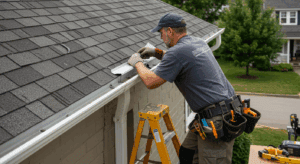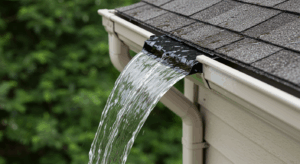Gutter flaps are an essential component of any home’s rainwater management system. Designed to prevent clogs and ensure smooth water flow, they play a crucial role in protecting your property from water damage. Whether you’re dealing with heavy rainfall or seasonal debris, gutter flaps can help maintain the integrity of your gutters and reduce the need for frequent maintenance. In this article, we’ll explore everything you need to know about gutter flaps, from their benefits to installation and maintenance tips.
What Are Gutter Flaps?
Gutter flaps are protective devices installed on gutters to prevent debris, such as leaves and twigs, from clogging the system. They act as a barrier, allowing rainwater to flow freely while keeping unwanted materials out. Typically made from durable materials like aluminum or plastic, gutter flaps are designed to withstand harsh weather conditions and provide long-lasting protection.
Benefits of Installing Gutter Flaps
Installing gutter flaps offers numerous advantages for homeowners. Firstly, they significantly reduce the risk of clogs, which can lead to water overflow and damage to your home’s foundation. Secondly, they minimize the need for frequent gutter cleaning, saving you time and effort. Additionally, gutter flaps improve the efficiency of your rainwater management system, ensuring that water is directed away from your home effectively. By investing in gutter flaps, you can enhance the longevity of your gutters and protect your property from costly repairs.
Types of Gutter Flaps Available
When it comes to choosing gutter flaps, homeowners have several options to consider. The two most common types are aluminum and plastic gutter flaps. Each type has its unique features and benefits, making it important to select the one that best suits your needs.
Aluminum vs. Plastic Gutter Flaps
Aluminum gutter flaps are known for their durability and resistance to rust, making them an excellent choice for areas with heavy rainfall. They are lightweight yet sturdy, providing reliable protection against debris. On the other hand, plastic gutter flaps are more affordable and easy to install. They are resistant to corrosion and come in various colors, allowing homeowners to match them with their existing gutter system. While aluminum flaps are ideal for long-term use, plastic flaps are a budget-friendly option for those seeking temporary protection.

How to Install Gutter Flaps
Installing gutter flaps is a straightforward process that can be done by homeowners or professionals. Proper installation ensures that the flaps function effectively and provide maximum protection.
Step-by-Step Installation Guide
- Gather the Necessary Tools: Before starting, make sure you have all the required tools, including a ladder, screwdriver, measuring tape, and the gutter flaps.
- Measure and Cut: Measure the length of your gutters and cut the flaps to fit accordingly. Ensure that the flaps cover the entire length of the gutter.
- Secure the Flaps: Place the flaps over the gutters and secure them using screws or clips, depending on the type of flap. Make sure they are tightly fitted to prevent any gaps.
- Test the System: Once installed, test the system by pouring water into the gutters to ensure that it flows smoothly without any blockages.
For a detailed guide on installing gutter guards, check out this step-by-step instruction.
Maintenance Tips for Gutter Flaps
While gutter flaps require minimal maintenance, regular upkeep is essential to ensure their effectiveness. Proper maintenance can help you identify and address potential issues before they escalate.
Common Issues and Solutions
One common issue with gutter flaps is the accumulation of small debris, such as pine needles, which can slip through the gaps. To address this, clean the flaps periodically using a brush or a hose. Another issue is the loosening of screws or clips over time. Inspect the flaps regularly and tighten any loose fittings to maintain their stability. If you notice any damage, such as cracks or warping, replace the affected flaps promptly to prevent further problems.
For more tips on maintaining your gutter system, explore this comprehensive guide.
Gutter flaps are a simple yet effective solution for protecting your home from water damage. By preventing clogs and ensuring smooth water flow, they enhance the efficiency of your rainwater management system and reduce the need for frequent maintenance. Whether you choose aluminum or plastic flaps, proper installation and regular upkeep are key to maximizing their benefits. Invest in gutter flaps today and enjoy peace of mind knowing that your home is well-protected. For professional installation services, check out top-rated gutter experts in your area.



